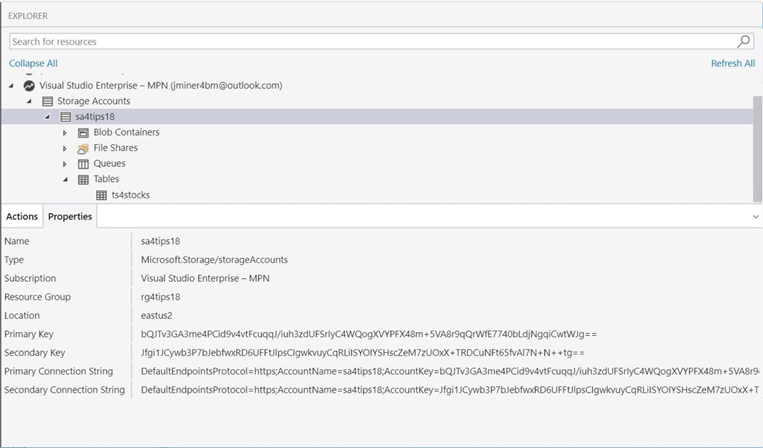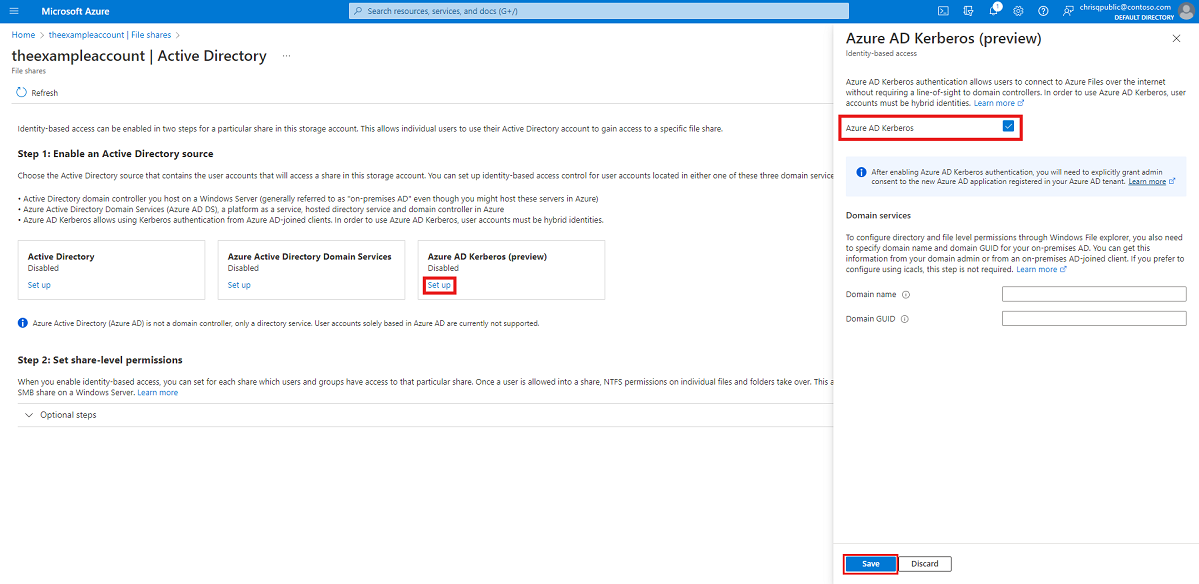

- MICROSOFT AZURE STORAGE EXPLORER POWERSHELL HOW TO
- MICROSOFT AZURE STORAGE EXPLORER POWERSHELL UPDATE
The statement includes the continuation token stored in the $Token variable.įor more information, type Get-Help About_Do. The fifth command specifies a Do-While statement that uses the Get-AzureStorageBlob cmdlet to get blobs.

The first four commands assign values to variables to use in the example. This example uses the MaxCount and ContinuationToken parameters to list Azure Storage blobs in multiple batches. PS C:\> Echo "Total $Total blobs in container $ContainerName" $Blobs = Get-AzureStorageBlob -Container $ContainerName -MaxCount $MaxReturn -ContinuationToken $Token Example 4: List blobs in multiple batches PS C:\>$MaxReturn = 10000 This command uses a name prefix to get blobs. Example 3: Get blobs by name prefix PS C:\>Get-AzureStorageBlob -Container "ContainerName" -Prefix "blob" This command uses the pipeline to get all blobs (include blobs in Deleted status) in a container. Test2 BlockBlob 403116 application/octet-stream 07:53:00Z False Test1 BlockBlob 403116 application/octet-stream 09:00:29Z True Name BlobType Length ContentType LastModified AccessTier SnapshotTime IsDeleted Example 2: Get blobs in a container by using the pipeline PS C:\>Get-AzureStorageContainer -Name container* | Get-AzureStorageBlob -IncludeDeleted This command uses a blob name and wildcard to get a blob. Examples Example 1: Get a blob by blob name PS C:\>Get-AzureStorageBlob -Container "ContainerName" -Blob blob* The Get-AzureStorageBlob cmdlet lists blobs in the specified container in an Azure storage account. In this article Syntax Get-Azure Storage Blob PowerShell modules to use Az PowerShell modules by 29 February 2024.
MICROSOFT AZURE STORAGE EXPLORER POWERSHELL UPDATE
To avoid service interruptions, update your scripts that use AzureRM We'll retire AzureRM PowerShell modules on 29 February 2024. NET Core HTTP 500 (500.Because Az PowerShell modules now have all the capabilities of AzureRM PowerShell modules and more,
MICROSOFT AZURE STORAGE EXPLORER POWERSHELL HOW TO
totalOldFileSizes - Total size of the folders, where every file is older than 1 year agoĪzure App Service Plans - How to temporarily disable App Services Plans? oldDirectories.Count - Number of folders, where every file is older than 1 year ago Only add folders to list and size total if meet date criteria HasNewFile = true //Don't include folder if exception found If (fileProp.LastModified > dtOneYearAgo) ShareFileProperties fileProp = fileClient.GetProperties().Value įileSizes += (long)fileProp.ContentLength ShareFileClient fileClient = shareDirector圜lient.GetFileClient(file.Name) ShareDirector圜lient shareDirector圜lient = share.GetDirector圜lient(x.Name) įoreach (var file in shareDirector圜lient.GetFilesAndDirectories()) ShareClient share = new ShareClient(connectionString, shareName) įoreach (var x in share.GetRootDirector圜lient().GetFilesAndDirectories()) Static string connectionString = ".txt", ("yyyyMMdd_HHmmss")) ĭateTime dtOneYearAgo = (-1) //1 year from today It seemed to work, however it is very slow (no timeouts however!) and might not be the most efficient. The only solution that I found works was via the Azure SDK. With Powershell & CLI, I faced multiple timeout errors as there were just too many files to parse. This tool does not provide any date filtering functions, nor ability to calculate statistics for multiple files. It is currently under Preview mode at time of writing. Storage Browser is the ‘Storage Explorer’ within the Azure portal. But both are similar to illustrate this concept. ** Note: Screenshot shown is just an example using Blob storage and not File Share. For my case where I had more than 100k files, this is not a feasible approach. Besides they have a m aximum of 100 cached items per page. This method only works for small number of files though, as there is no way to filter out files by dates. Click on “Selection Statistics” and it will show the file count and total size. We can easily sort files by “Last Modified” and highlight the files / folders that is within date range. The UI is simple and straight forward to use. Azure Resource Explorer is a new web site where you can easily: Discover the Azure Resource Management APIs Get API documentation Make actual API calls directly in your own subscriptions Here's a 5 minute screencast that shows Resource Explorer in action, and will give you a good sense of what it's all about. However, what is the best option in the scenario above? Azure Storage ExplorerĪzure Storage Explorer is a standalone tool that can be installed onto your system for easy operations with Azure Storage. It can be earlier!Īs we know, Azure provides a number of ways to interact with Azure Storage. Say for example, if I have 2 files, where their Date Modified is 20th March 2020 and 22nd March 2020, it does not mean the directory's "Last Modified Date" is 22nd March 2020. **Directory's "Last Modified Date"** does not equate to the **lastest "Last Modified Date" of the files within the directory**.


 0 kommentar(er)
0 kommentar(er)
